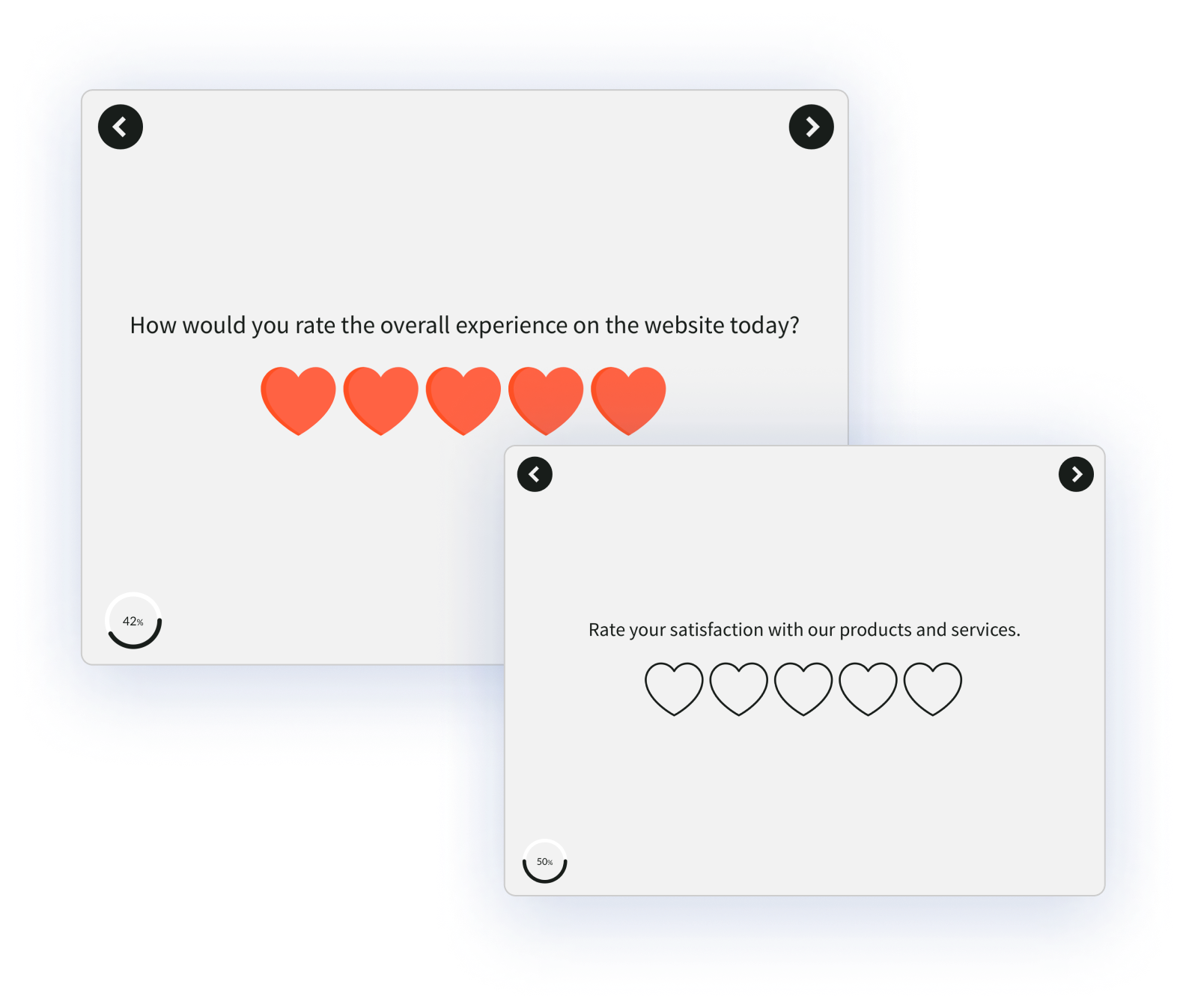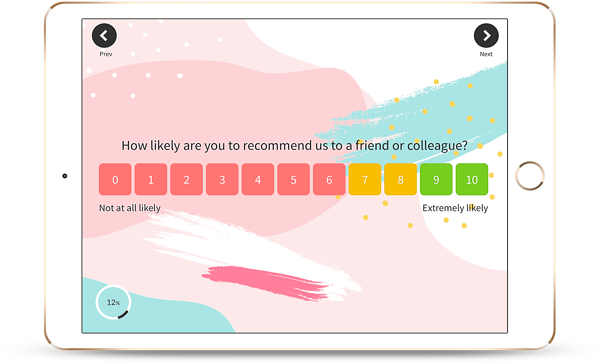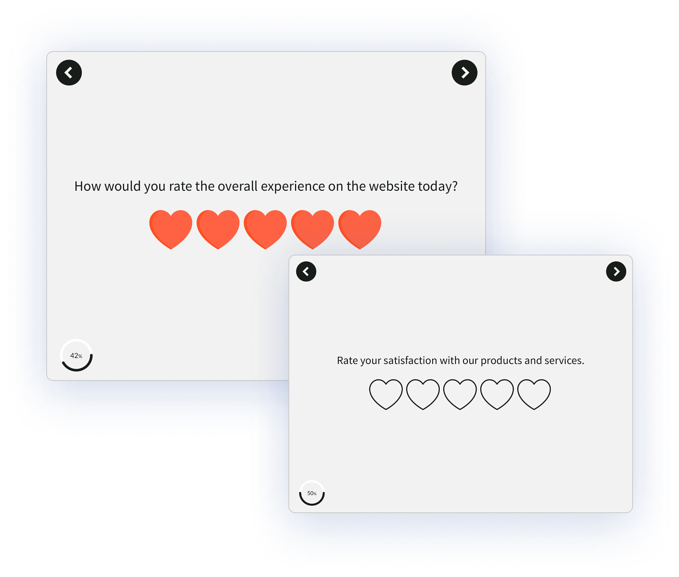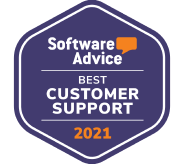chapter 1
Introduction
Great products aren’t built in isolation; to create a customer-centric SaaS product, it’s important to give the end-users of your product a say in decision-making.
How to get the right messaging? How to create a sophisticated product that people actually want to use? How to make consistent updates to stay competitive? Product feedback from customers can give you insights that can help you make all the right decisions.
SaaS product feedback isn’t a one-time job; it is a continuous process that shapes your product roadmap with a sure-fire customer-centric approach.
But, what is product feedback? How can you capture feedback? How can a product feedback tool help? How to leverage feedback throughout your product development and enhancement journey? Read all about it in this comprehensive guide.
chapter 2
What is Product Feedback?
Product feedback is information shared by your customers based on their experience with the product. It can be captured through different mediums, such as surveys, direct communication, etc.
Product feedback ensures that SaaS companies do not work as a deer in the headlight, but instead have a clear sight of what they must build to maximize user satisfaction. It allows eliminating bad ideas and enables working with a customer-centric thought process backed by reliable customer data.
Moreover, customers can be involved in decision-making from the stage of inception so that there is lesser backtracking and more progress.
Chapter 3
Product Feedback Types
There are two types of product feedback:
Solicited Feedback
Solicited feedback is when you ask your customers to share their views, positive or negative, based on their experiences with your product. It requires your CX team to provide context and ask for information that would be helpful in improving the product.
Unsolicited Feedback
Unsolicited feedback is when your customers share feedback directly or indirectly without being asked to. This information may come in an unorganized way and requires CX teams to dig deeper, sometimes more often, to recover insightful data.
chapter 4
Product Feedback Methods
You can collect product feedback through different methods based on the kind of information you are looking for. Here are the key product feedback techniques that businesses around the globe use:
1. Product Feedback Surveys
Surveys are an effective product feedback tool that helps collect the right data at the right time. Digital surveys give SaaS companies more control over the collection and management of data, while also improving the feedback sharing experience of customers.
Survey Types
CSAT: CSAT or Customer Satisfaction is the measure of customers’ satisfaction levels in terms of product features and experience. CSAT surveys can be shared via email and can also be embedded directly in the app or website so users can share their feedback while using the product.
A CSAT survey prompts the user to share their experience on a scale of 1 to 10 and can be configured to collect event-specific feedback, for example,
- To measure the performance of new features or launches
- To validate new concepts or ideas
- To collect feedback on pricing and packages
- To capture refreshing suggestions on product improvement
- To measure website feedback
- To measure overall satisfaction with the product
Here’s a CSAT survey question:

NPS: NPS or Net Promoter Score indicates the customers’ willingness to recommend the product to others. It is an important metric since it helps in developing impactful referral strategies and attractive packages to invite new users.
Here’s an NPS survey question:

2. Customer Interviews
Customer interviews are still an effective product feedback strategy that can help in everything from research to post-launch improvements of a SaaS product.
The key to interviewing customers is to avoid any leading questions that may interrupt their chain of thought and affect the feedback quality. The interviewees must be given a platform to discuss and share their honest opinions and suggestions.
Customer interviews, however, can be limiting since they do not allow capturing product feedback from a vast audience. A combination of digital feedback and direct interviews can do wonders though.
3. Product Analytics
Product analytics is an indirect product feedback method that helps in understanding how it is performing. It gives a direct insight into users' activity, which can validate your research and earlier feedback.
Often, you may miss out on critical feedback, leading to ambiguity. But with product analytics, you can identify underlying issues. For example, you can check customer churn, analyze subscriptions, etc. Moreover, you can check when anomalies happen to understand where the issue lies.
The product analytics data is the starting point of your research and ensures that you make the efforts in the right direction.
Conclusion
Product feedback is critical if you wish to stay competitive. It helps you align your SaaS product with customers’ needs and upgrade your offerings from time to time.
Begin with direct customer feedback and choose a tool that allows you to create a consistent feedback loop and enables you to manage data effectively so that your team can take care of more important customer-centric tasks





 iPad Surveys
iPad Surveys Android Surveys
Android Surveys Kiosk Surveys
Kiosk Surveys Mobile Forms
Mobile Forms Email Surveys
Email Surveys SMS Surveys
SMS Surveys Website Surveys
Website Surveys Creating Surveys
Creating Surveys Multilingual Surveys
Multilingual Surveys Collecting Feedback
Collecting Feedback Closing Feedback Loop
Closing Feedback Loop Reporting & Analytics
Reporting & Analytics NPS Dashboard & Reporting
NPS Dashboard & Reporting Multiple Locations & Chains
Multiple Locations & Chains Offline Device Tracking
Offline Device Tracking APIs, Webhooks & Integrations
APIs, Webhooks & Integrations Healthcare
Healthcare Education
Education Retail
Retail Financial
Financial Restaurants
Restaurants Hotels
Hotels Customer Satisfaction
Customer Satisfaction Patient Satisfaction
Patient Satisfaction Employee Satisfaction
Employee Satisfaction Net Promoter Score
Net Promoter Score Website Surveys
Website Surveys Feedback Form Templates
Feedback Form Templates Integrations
Integrations The Ultimate NPS Guide
The Ultimate NPS Guide Survey Tips and Tricks
Survey Tips and Tricks Blog and Insights
Blog and Insights Survey Guides
Survey Guides Help Documentation
Help Documentation Customers
Customers
















